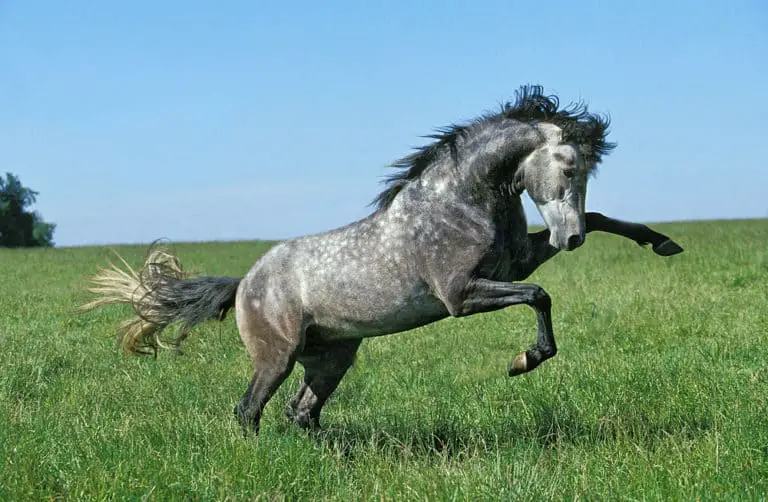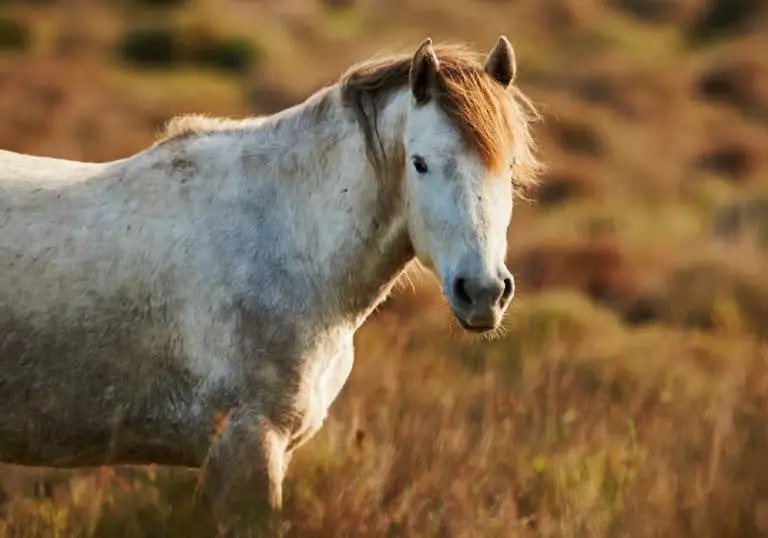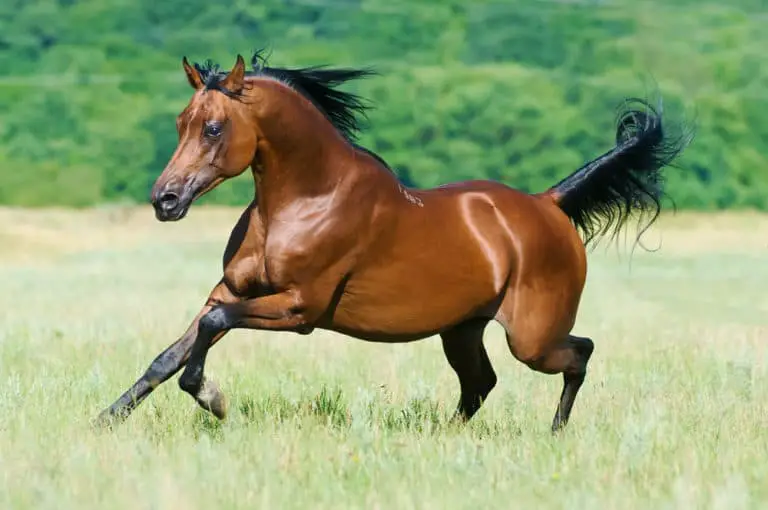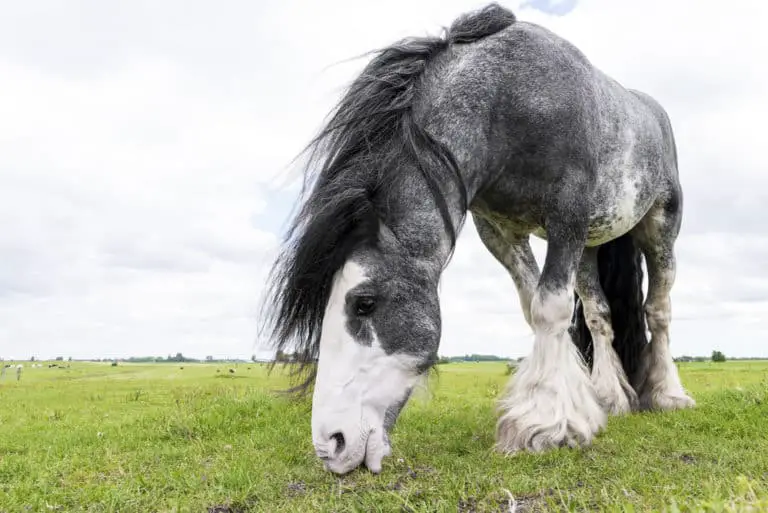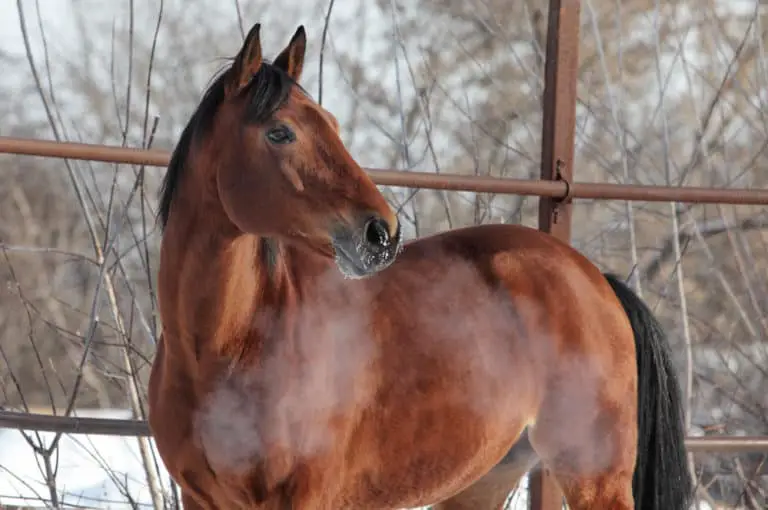Shetland Pony Breed: Care, Cost & History (2024)
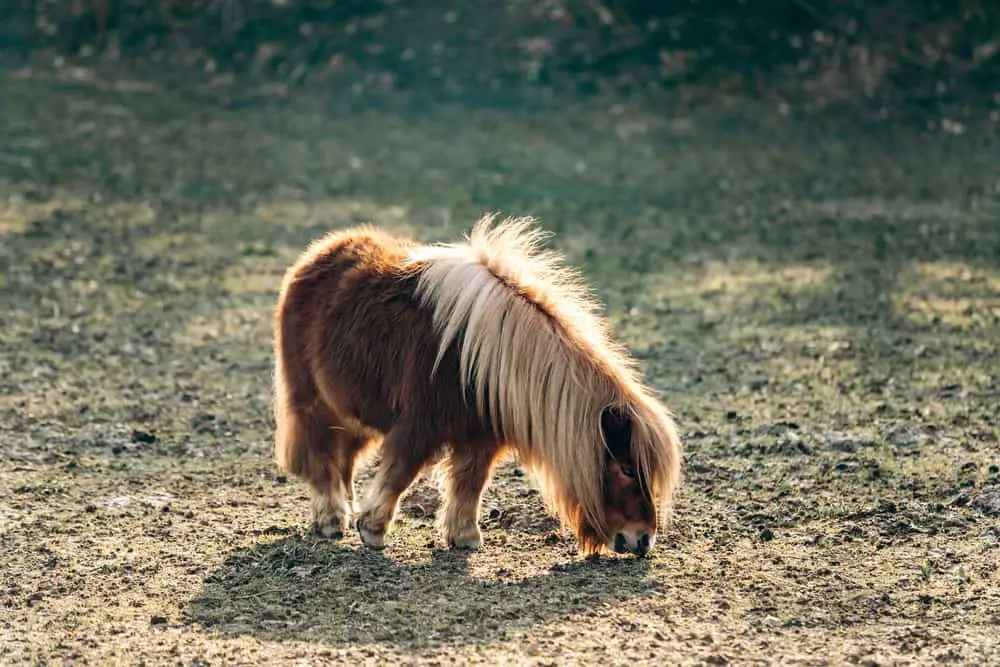
The Shetland Pony is the epitome of pony breeds worldwide. The lovely small equines are popular in many countries and especially beloved by children and young adults who enjoy riding them.
Originating from the Shetland Isles in Scotland, the small creatures are astonishingly hardy and tough due to the harsh environmental circumstances of their home country, the Northern Scottish Isles.
Breed: Shetland Pony
Adult Weight: 400-460 lbs
Adult Height: 42 inches (10.5 hands)
Origin: Shetlands Isles, Scotland
Use: as pets, pleasure, riding
Colors: all colors except spotted coats
Features: Small size, strong and stocky body, thick mane and tail
Lifespan: up to 30 years
Character: Docile, intelligent
Gait: flexible
Best for: Children, light adults
- Characteristics
- Shetland Pony Care
- Shetland Pony History
- Modern Shetland Ponies
- Cost and Ownership
- Buying a Shetland Pony
- Similar Breeds
Shetland Pony Characteristics
Shetland Pony characteristics are easy to identify and especially their physical appearance is one of the breed’s main characteristics. The Shetland Pony head is small and framed by a full and voluminous mane. Shetland Ponys have widely spaced eyes and a dense and thick coat. Their body is stocky and they have strong and short legs.
Size
The Shetland Pony height must not exceed 42 inches (107cm) at the withers if the pony is to be registered with the Shetland Pony Studbook Association (1). Shetland Pony size can be described as small with a Shetland standing at 10.5 hands whereas adult light horse breeds averagely stand at 14.2 hands.
Despite its small size, the Shetland pony has a stocky and sturdy body built. Their size does not hinder them from participating in many equestrian disciplines since they are strong and muscular ponies. Even in the category of ponies, the Shetland pony is rather small, seeing that ponies can stand up to 14.1 hands high.
Weight
The Shetland Pony weight is not regulated by the Shetland Pony Studbook Association. This is why the weight of every Shetland horse can vary but naturally evolves around a common average. Usually, the average for Shetland ponies is between 400 to 450 lbs which is 180 – 200 kg (3).
A surprising fact is that the Shetland pony, despite its size, accounts to be the strongest equine for its weight. The harsh environment of the Shetland Isles in Scotland made this pony into a sturdy and hardy horse with a lot of power. They have a shorter cannon bone for their size and a strong bone structure.
Colors
There is almost no limitation when it comes to Shetland Pony colors. The beautiful Shetland Pony is allowed to be of any color according to the Shetland Pony Studbook Association (1).
The only limitation regarding coat colors for Shetland ponies is the marking. Shetland ponies will not be officially registered with the Studbook if they have a spotted coat.
Rare Shetland Pony colors are champagne, cremello, and true white. True white means, that the Shetland pony has pink skin underneath the white coat.
Standard coat colors of Shetland ponies are bay, white, chestnut, grey, black, cream, dun, bay, roan, palomino, and buckskin.
Temperament
Many people don’t know that ponies are often more temperamental than average horses. There is the myth that Shetlands are mean, but this is actually not true for the Shetland Pony temperament.
Even though like any horse breed intended for horsemanship and riding, a Shetland pony needs to be broken like taller horses to make it safe to be ridden, the Shetland is a super friendly and calm pony (7).
Shetland Pony behavior is known to be characterized by intelligence, docileness, and courage. Shetland Pony training revealed that the small equines are perfectly suited to be ridden by children and to be the first horse of a child.
They are also perfectly suited for carriage riding since they don’t spook easily and are hardy horses.
Shetland Pony Care
The Shetland pony breed does not have any specific requirements when it comes to horse care. The most high-maintenance part about their grooming is their thick and full mane, tail, and coat that needs to be brushed regularly.
Like any horse or pony, it is preferably held in large and plain areas, where they can graze through the pasture.
As the Shetland pony is used to harsh and extreme environments, they are considered easy keepers. They will be accepting of tough environments with extreme weather. To ensure a long and healthy Shetland Pony lifespan one must care well for the pony.
Diet and Nutrition
The Shetland Pony diet is similar to that of a light horse and does not differ much from a common horse diet. The metabolism of a pony is usually slower than that of large horse breeds which is why they have lower-energy requirements (8). Their diet should be based on good-quality forage, meaning grass, pasture, and some fruits and vegetables.
Be aware that forages alone may lack some important minerals, vitamins, and sometimes protein. You can supplement those nutrients by adding a salt-lick to your horse stable and supplying your Shetland with high-quality supplements and low-calorie grain feed. Ponies can be prone to obesity, so avoid too rich commercial feeds.
Health Problems
Unfortunately, the Shetland pony is known to be prone to some health issues and genetic problems. This does not mean that Shetland ponies are per se unhealthy or will get sick, but owners should be aware of a few health-related issues that might occur. Shetland Ponies are prone to obesity and therefore their diet must be monitored and regulated.
Furthermore, the Shetland pony can be affected by hyperlipidemia (4). Hyperlipidemia means that the horse has too many lipids (fat) in its blood. Symptoms of the illness are depression, low-energy levels, anorexia, diarrhea, or abdominal swelling. A healthy and pony-friendly diet is important to avoid your pony getting this illness.
Grooming
Shetland Pony grooming is just as demanding as that of taller horse breeds. Especially the thick coat, mane, and tail of the Shetland pony are more demanding when it comes to grooming. Your horse should be groomed by you every single day.
Use a hoof pick to remove the packed dirt from the hoof of your Shetland horse every second day and after every ride.
Brush the coat with a body brush to clean it from dust and small particles. Brushing will also strengthen the emotional relationship with your Shetland since it imitates interactive social behavior of horses.
Use a Curry Comb to remove more grave dirt and grease from the thick coat. Curry combs can also help to stimulate the blood flow of your horse. You should inspect the hooves regularly to prevent injuries or infections.
Shetland Pony History
The Shetland Pony history is rich and old. The small ponies originate from the Shetland Isles in Northern Scotland and have a history that is older than 2000 years. Over many centuries, numerous records and stories mention the tiny horse from Scotland and its evolution during time. The Shetland pony traveled the world and was used versatile throughout history until today.
Origin
The Shetland Pony origin is on the Shetland Isles, north of Scotlands coast. The rugged and beautiful islands formed the Shetland pony over time into the sturdy pony we know nowadays. It is known that the ancestors of the Shetland pony already lived during the Bronze Age on the Shetland Islands since bone excavations revealed the existence of small horses there (2).
The true origin of the Shetland is believed to be the Cob type of Tundra and the Mountain Pony from Southern Europe. Those horses migrated over massive ice fields and landmasses to the region that is nowadays the Shetland Isles. A later introduction of a Celtic pony was brought to the region by settlers and influenced the Shetland ponies’ evolution further.
Historic Development
It is believed that the Shetland pony was used during the Bronze Age for domestic purposes (2) like pulling carts filled with peat, and coal and ploughing the farmland of the villagers. When industrialization hit Scotland, the small Shetlands have been imported to Britain to be used as pit ponies to haul coal underground in several mines. Since they were so hardy and durable, the Shetlands have been exported to the United States for the use as mine ponies as well.
Luckily, nowadays their use as pit ponies is history and they are mainly kept as pets, for pleasure, or as riding horses for children or small adults.
Notable Shetland Ponys
Acknowledging that the Shetland Pony is indeed the best-known pony breed worldwide, there are some famous Shetland Ponys one should know about. Some of those ponies come from a prestigious Shetland Pony pedigree or rose to fame due to their excellent performances in competition. Most notable Shetland Ponies are ridden by children or young adults.
Firle Giorgio
Firle Giorgio is a beautiful chestnut-colored Shetland Pony stallion that was ridden by Sophie Turner. The pair qualified at the BSPS Heritage championships for Olympia. Firle and Sophia were standing third in the semi-final. The chestnut Shetland and the little girl also qualified for the Royal International (RIHS) and finished in third place.
Briar Snowman
Another notable pair is the rider Lily Richardson with her stunning white Shetland gelding named Briar Snowman. Briar Snowman is known to be ultra-consistent and was crowned Horse of the Year in the HOYS. The pair won several other competitions and look adorable together.
Zennur Saffron
As the name indicates, Zannur Saffron is a precious chestnut-colored Shetland mare. Together with her rider Jasmine Wharton, the pair qualified for the RIHS open first-ridden final at the NPS Scotland spring show. In the home country of the Shetland, the pair won the title of overall mini champions.
Myths and Legends
The Scottish myths and folklores of the Shetland Isles are very colorful and even mention some Shetland Pony legends. Some of those legends are tragic and end sadly for the small horse. There are also some modern-day myths surrounding Shetland Ponies that can be de-mystified.
The Cliff
Dutch fishers have been known to fish ashore of the Shetland Isles. Those Dutch sailors often had doctors with them who recommended the sailors exercise regularly. The Dutch then often rented the local Shetland ponies to ride which made for funny scenes and tales. Unfortunately, one of these stories tells us about a drunk Dutch fisherman riding over the edge of a cliff with a pony.
Shetland Crimes
There have been many scurrilous laws surrounding the Shetland pony during earlier periods. This is due to the fact that many owners of Shetland Ponies often claimed ownership over the ponies, but released them into the wild again until they would need them for the next task. This led to the unlawfully stealing of some Shetland ponies. Some people were stealing them because horse fur was in demand for bird snares and making fishing lines.
The most valuable export
In 1885 the very first Shetland Pony was unloaded into the New World, the United States of America. It was to the surprise and astonishment of the settlers overseas, how precious and special this small pony looked and one settler offered the man importing the Shetland, the jaw-dropping price of £100 for the Shetland mare. This was a very high and unmatched price at the time.
Modern Shetland Ponys
Nowadays the different types of Shetland Ponys are more popular than ever. The modern Shetland pony is a beloved breed worldwide and you can see them in many countries.
Especially children love to ride and train with the small Scottish ponies. Even though, some still use the Shetland pony for driving or pulling purposes, the use for pleasure is the most popular purpose of the Shetland.
Breeding
The Shetland Pony Studbook Association is committed to preserving, protecting and improving Shetland Pony breeding. To retain the characteristic lineage and appearance of the Shetland is another breeding goal. Shetland Ponys breeding is popular worldwide and if you want to register your pony as a true Shetland you need to adhere to the strict breeding regulations (7).
Throughout Europe, North America, South America, and Asia you can find numerous Shetland ponies and studs. Many of them are located in Holland and Great Britain since those countries are amongst the most popular for Shetland pony studs and breeding.
Population
The first Shetland Pony stallion was imported to the United States in 1885 and the breed soon became popular and was in high demand. There are approximately 100,000 Shetland ponies registered in the world today. Surprisingly, half of them (50,000 Shetland ponies) live in Holland and another 15,000 ponies live in Britain.
Only around 1,000 ponies live on the Shetland Isles, but this is due to the small size of the islands. There are more Shetland ponies living in the Shetland Isles than humans. There is no number regarding the Shetland Pony population in the US.
Uses
The Shetland Pony uses are versatile despite the small size of the ponies. The Shetland can be used for driving, pulling, riding, and even jumping. The Shetland Pony gait is elastic and sturdy.
The most popular use for a Shetland pony is that of a pet. The small equines are beloved by children and adults. The Shetland is wonderfully suited to be the first horse for a child. The Shetland pony is sturdy and hardy and can withstand tough weather. They are used to stand on the paddock even in rain and during winds and can be kept as farm animals.
Shetland Pony Prices
The Shetland Pony price is defined by the age, pedigree, accomplishments, and training the pony has received. The location of your home can also be relevant to the price since it can be harder to get a Shetland pony in more remote areas compared to horse-enthusiastic regions.
The most expensive cost of having a Shetland pony is the upkeep throughout the years. Horsemanship is not cheap and comes with regular costs.
Purchase Price
Since the Shetland pony is so popular and a beloved breed worldwide, it is not too difficult to find a suitable Shetland pony for purchase. The price of a Shetland Pony is rather cheap compared to that of rarer breeds and horse breeds that are suited to compete professionally in dressage and show which a Shetland usually doesn’t do.
Usually, many Shetland ponies will not be registered officially with the studbook, which will decrease the initial purchase price, but even a registered Shetland Pony can cost as little as $800 (9). A registered and trained Shetland stallion can cost up to $2,000 upwards.
Ownership Costs
It is essential if you want to buy a Shetland pony, you are aware that several costs will come on top of the initial Shetland Pony price. Make sure your Shetland is healthy and suitable for your intended use.
The regular Shetland Pony cost of ownership should also be taken into account: board, feed, veterinarian care, and hoof care are just some of the regular expenses.
Board
Boarding is a significant and very expensive factor in the costs of horsemanship. You will most likely have to pay monthly fees for the Shetland Pony board cost if you do not own a smallholding or stable yourself.
Keeping a horse near a big city will be more expensive than stalling them in areas where there are many equestrians already. Boarding costs can range from 175$ per month for simple boarding to 750$ a month for show boarding or 650$ for full board (5).
Feed
The Shetland Pony feed cost will not too different from that of taller breeds (8). This is because they are natural grazers like almost every other horse breed and mainly eat hay and grass.
The estimated daily water intake of a pony is around 2.4 – 8.3 liters per day, and their estimated daily food intake is approximately 5.5 kg of hay. A bale of hay will cost around 2$ up t0 14$ depending on the region you live in.
Veterinary Care
The Shetland Pony veterinary cost will be approximately $1,291 a year if you set up a care plan (6). These costs cover annual vaccinations, deworming for 12 months, and teeth floating once per year.
However, these costs do not cover anything unexpected like injuries, inflammations, or colics. One of those alone can cost up to $500-$1,200 depending on the severity of the problem.
Shetland ponies are prone to obesity and should be monitored regularly for their dietary intake and weight (.
Hoof Care
The Shetland Pony hoof care cost will be a regular expense even if your Shetland does not wear shoes. Horses need to get new shoes or a trim every 6-8 weeks, and the costs of hoof care must be considered a regular expense (6).
Full-shoeing a horse’s hooves will cost around $1,300 a year. Front-Shoeing, your horse, will cost about 650$ a year and even just a trim of the hooves can cost up to 346$ a year.
Buying a Shetland Pony
The Shetland Pony breed can be purchased easily in almost any country, but you need to be aware of what is important during a pony or horse purchase. First and foremost of all, the horse of your interest should be suitable for your intended use: for pleasure, for your children, or as a farm animal? Look for a breed you can trust and who has a good relationship with his animals, rather than a moneymaking pony mill.
Is the Shetland Pony Right for You?
The Shetland pony is a great choice for almost every horse enthusiast. Riding a Shetland Pony will be a great joy for children or light adults. It is not suitable for fully grown adults to ride, except if they are super small and light. The Shetland pony is also a great companion for other horses or ponies and it will graze your grass beautifully.
Keep in mind, that if you buy a Shetland pony for your children to professionally learn and compete, your child will outgrow the Shetland at some point and it would not be a sensible option to part with your small family member then. Owning a Shetland Pony comes with great responsibility and is an important commitment.
How to Buy a Shetland Pony?
First, look for a Shetland Pony breeder of your choice and visit the stud. Buying a Shetland Pony is a big commitment and should not be done in a rush. The breeder should have a clean and well-organized stud with not too many horses.
Look out for the interaction between the breeder and the Shetland pony of your choice. Does it seem trusting or frightened and distanced?
If you feel like the breeder wants to do a quick sell or avoids your questions, rather walk away. Interact with the Shetland pony and talk with the breeder about his experience with the pony. What is it like? Will you be a good fit for each other?
Similar Breeds to Shetland Pony
If you are looking for Shetland Pony breed alternatives, there are various options to choose from. Whether you are looking for a taller pony that is also suitable to be ridden by adults, an even smaller pony, or just another pony with a different look, there are some interesting alternatives to Shetland ponies.
Icelandic
The Icelandic is a sturdy and hardy pony that has a similar look to the Shetland pony. The main difference between the Icelandic and the Shetland is, that Icelandics can also be safely ridden by almost any adult (overweight or very tall adults excluded). Icelandics have a great personality and are wonderful alternatives for adult pony fans that want to be in the saddle.
Falabella
The Falabella is a pony breed from Argentina and is even smaller than the Shetland pony. They are amongst the smallest ponies worldwide and are usually just kept as pets. Sometimes the Falabella will be ridden by small children and it can be trained to pull a tiny cart, but they are not suitable for any heavy carrying or lifting.
Connemara Pony
The Connemara Pony is a rather tall pony from Ireland. Connemara is a beautiful region in the far west of Ireland where the ponies have been named after. They still roam the fairytale landscapes and are frequently ridden by children and adults for pleasure, show, and even dressage. The Connemara pony is a bigger alternative to the Shetland with a shorter coat and a more defined body that looks similar to a taller horse breed.
FAQ
Is the Shetland Pony a British breed?
No, the Shetland Pony is a Scottish breed originating from the Shetland Isles north of Scotlands coast.
Are Shetland Ponies mean?
It is a myth that Shetland ponies are mean, but the character of every pony can be different.
What is a Shetland Pony?
The Shetland pony is an equine originating from the Shetland Islands.
What does a Shetland Pony look like?
Shetland ponies are small with stocky and sturdy bodies with a thick mane and tail.
How did the Shetland Pony get its name?
The Shetland pony was named after its origin, the Shetland Isles in Scotland.
Can you ride a Shetland Pony?
Only children and very light adults can be safely carried by a Shetland pony.
Are Shetland Ponies good for beginners?
Shetland ponies are docile and intelligent, which makes them suitable for all-level riders and even very young children.
How tall is a Shetland Pony?
Shetland ponies can not exceed 42 inches (107cm) at the withers and stand at 10.5 hands.
How much does a Shetland Pony weigh?
The average weight of a Shetland pony is between 400 to 450 lbs which are 180 and 200 kg
How big is a Shetland Pony?
Shetland ponies are small, but they have a sturdy and stocky bodies.
How much does a Shetland Pony cost?
A Shetland Pony foal can cost as little as $200 and a trained, accomplished Shetland Pony gelding can cost up to $2,800.
How much does a Shetland Pony ownership cost?
Despite the initial purchase price, boarding costs can range from 175$ per month up to 750$ a month for show boarding.
How long do Shetland Ponies live?
Shetland ponies can live up to 30 years.
How fast can a Shetland Pony run?
Shetland ponies can run between 25-30 mph.
How much can a Shetland Pony pull?
There is no definite amount of weight a Shetland pony can pull.
How much can a Shetland Pony carry?
Shetland horses can carry up to 20% of their own bodyweight, which accounts for a maximum of 40kg.
At what age is a Shetland Pony full grown?
Shetland ponies are fully grown at five years of age.
What are Shetland Ponies used for?
Shetland ponies are mainly used for pleasure and riding.
References
- The Shetland Pony Stud-Book Society. 2022. Breed Standard. Link
- The Shetland Pony Stud-Book Society. 2022. Breed History. Link
- The Shetland Pony Stud-Book Society. 2022. Breed History. Link
- Thomas J. Divers, Michelle Henry Barton. 2018. Shetland Pony. Link
- New Horse. 2022. Horse Boarding. Link
- Equine Guelph. 2022. Annual Horse Expense Sheet. Link
- The Shetland Pony Stud-Book Society. 2022. The Pony Today. Link
- Kentucky Equine Research. 2011. Feeding Ponies. Link
- Ehorses. 2022. Shetland Pony Prices. Link

